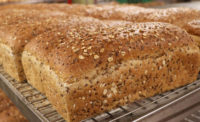Sustainability strategies to reduce food waste in snack and baking


Courtesy of Dieffenbach's Potato Chips


In 2016, the Food Waste Reduction Alliance (FWRA)—a collaborative effort between the Food Marketing Institute, Grocery Manufacturers Association and National Restaurant Association—released its most-recent “Analysis of U.S. Food Waste among Food Manufacturers, Retailers and Restaurants” report, presenting the findings of its survey of food manufacturers, food retailers/wholesalers and restaurants on the current state of food waste in the U.S.
The report identified several opportunities to reduce food waste:
Improve tracking.
Measuring and tracking food waste remains a challenge for food companies. FWRA suggests that companies need to continue to invest in data collection tools to measure and track improvements, including investments in software or other tracking systems to increase the ease of data collection and tracking. The report notes that improved tracking will allow companies to better understand what types of food waste they are generating and to tailor food waste reduction and food waste diversion methods to organizational needs.
Increase internal analysis and investment.
The FWRA report notes disconnects between food companies and barriers to reducing waste. Undertaking an internal review and analysis of food waste data can help companies better understand where they are generating the most food waste and identify opportunities to invest more to either reduce this waste or divert it through recycling or donation.
Share best practices.
In its survey, FWRA found significant differences regarding where and how food waste is diverted. For instance, the study found medium-sized manufacturers are donating food at higher rates than large and small manufacturers. Also, small retailers and/or wholesalers recycle a majority of their reported food waste via composting, while medium and large retail/wholesale companies have a broader portfolio of recycling methods. Implementing a stronger level of information sharing across these market segments could help increase composting at larger companies while broadening the recycling efforts of smaller retailers.
(See the FWRA “Best Practices & Emerging Solutions Toolkit” to review best practices and strategies to help reduce food waste, solve barriers to donation and divert food waste to a broader set of destinations.)
Estimates by the Natural Resources Defense Council (NRDC) have shown that America throws out more than 400 pounds of food per person per year. In baking, one key way to help prevent food waste is to preserve freshness and extend shelf life. Investing in modern packaging techniques is a key strategy for making strides in this direction.
In its June 2016 “Food Packaging Trends—U.S.” report, Mintel found four in five (80 percent) U.S. food shoppers agree that reducing food waste is as important as reducing packaging waste. This combined desire has led food manufacturers to invest in offering single-serve products using packaging materials that shoppers can easily recycle. People also like to see their food, so clear panels on packaging can help positively sway purchase decisions.
NRDC has also found that around half of all U.S. produce goes to waste, including “imperfect” produce that doesn’t meet idealized standards for processing. One snack company that’s tackling this issue is Dieffenbach’s Potato Chips, which recently announced the “It’s Good to be Ugly” campaign and its Uglies brand, made with potatoes that have slight cosmetic imperfections and might otherwise be discarded. Since launching the line in 2017, Dieffenbach’s has saved more than 350,000 pounds of potatoes from going to waste. The snack producer has grown by more than 150 percent in the last three years, and is planning to open a new facility in 2018.
In 2015 under the Obama Administration, USDA Secretary Tom Vilsack and EPA Deputy Administrator Stan Meiburg announced the first-ever national food waste reduction goal, calling for a 50 percent reduction by 2030. By taking a leading role in this increasingly high-profile fight, snack and bakery companies can align themselves with positive change—and highlighting these efforts through marketing will undoubtedly resonate with shoppers.
Looking for a reprint of this article?
From high-res PDFs to custom plaques, order your copy today!










